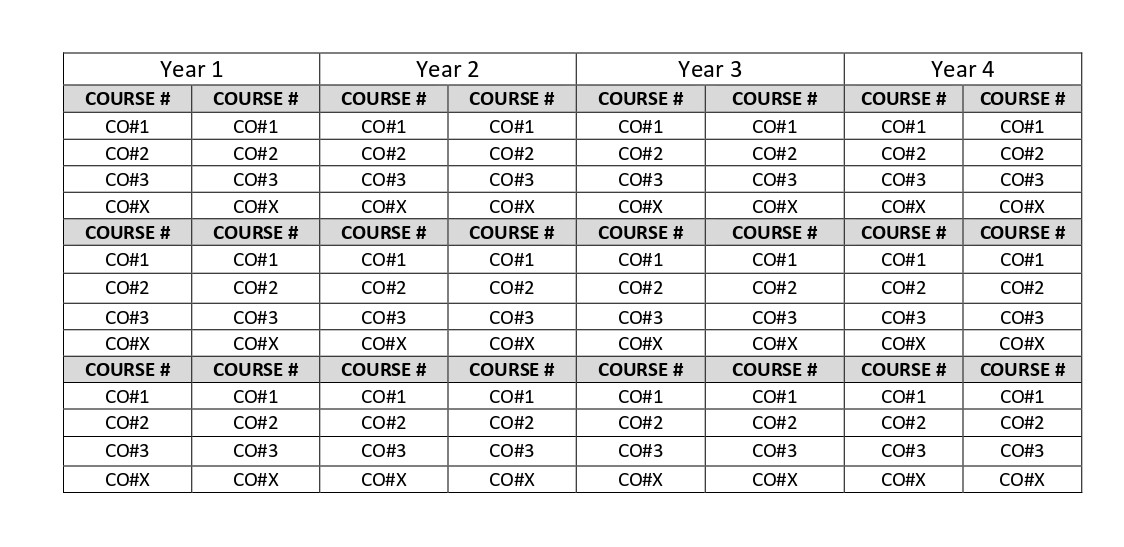4.1. Course Outcomes
In the curriculum mapping section, the program review team mapped out the relationship between program and course outcomes in detail. In the following section, we focus on current course outcomes developed for key discipline specific courses in great depth.
Course outcomes measures “an intended effect of the educational experience that has been stated in terms of specific, observable, and measurable student performance at a course level” (Adopted from Veltri, Webb, Matveev & Zapatero, 2011). In other words, course outcomes are statements that describe key competencies, capabilities students can demonstrate at the end of the course.
In section 3.6, the difference between program and course outcomes were discussed. You may recall that course level outcomes are more specific, actionable than program level outcomes. Go back and read the information provided in that section again before you proceed further.
After completing this section, the program review team may identify potential changes to the current course outcomes. Any changes to course outcomes need to be addressed in the recommendations section of the self-study report.
Before You Begin
Use the Blooms Taxonomy and the template provided for this purpose.
Appendix 8: Evaluating Course Outcomes
a) Use the Blooms Taxonomy action verbs to evaluate course outcomes. Links below will provide a list of action verbs (regular Blooms and the digital Blooms version) to be considered when arranging outcomes based on their level of complexity (lower to higher order skills).
Appendix 9A: Blooms Taxonomy of Verbs
Appendix 9B: Blooms Digital Taxonomy of Verbs
b) Refer to the exercise carried out in section 3.6.1 of this guide to identify discipline-specific courses of the program. This analysis should be completed only for discipline specific courses.
c) Sequence each discipline specific course name/number based on the year (1, 2,3, & 4) in which they are offered in the program. See diagram below. This arrangement is important as a student progresses through the years of the program, the complexity of learning outcomes offered in higher level courses should be more complex than lower-level courses.
d) Copy and paste the course outcomes for each course. Now you are ready to start the analysis.

4.1.1. Preliminary Scan of Course Outcomes
Having listed all discipline specific course outcomes, identify whether
a) Course outcome statements are written clearly.
b) Course outcome statements are measurable.
c) there are any unclear, ambiguous action verbs used in any course outcome statements?
d) Course outcome statements too long or too short?
e) there are multiple verbs and therefore multiple outcomes in a single statement?
f) you have any other observations
4.1.2 Deep Dive into Course Outcomes
Having completed the preliminary scan, assess whether the complexities of the action verbs/course outcomes currently used across discipline specific courses are
a) are course learning action verbs aligned with the competency level that is intended to be achieved? For example, if you select a verb to “identify”, is simple recognition enough or do they need to apply, interpret?
b) adequately reflect the year in which the course is offered in the program. Ideally higher-level courses should include several higher order action verbs than a lower-level course.
c) adequately reflect on the credential-level specification of the program.
4.1.3. Next Steps
Refer to the Self-Study Guide (KPU Program Review Guide Series #4) Chapter 4, section 4.1 (course learning outcomes). Follow the instructions provided in that section.

